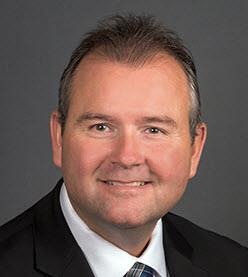Kelvin Goertzen will serve as deputy leader for rural Manitoba
By Diego Flammini
Staff Writer
Farms.com
The Progressive Conservative Party of Manitoba is officially on the road to choosing a new leader.
Party members voted for Wayne Ewasko, the MLA for Lac du Bonnet since 2011, and a former minister of education and early childhood learning to serve as the party’s interim leader and leader of the Official Opposition.

Wayne Ewakso.
“I’m extremely honoured to have been chosen by our PC caucus to lead them going into the leadership race,” he told media at the Manitoba Legislature on Jan. 29.
He will be in these positions until party members elect a new leader in a leadership contest planned for later in 2024.
Ewasko takes over for Heather Stefanson.
She announced her resignation as leader on Jan. 15, calling her time as leader and premier “the honour of a lifetime,” and says she’s looking forward to watching the PCs hold the NDP government accountable.
She publicized her intent to step down following the NDP’s election win in October. She will remain in the legislature as the MLA for Tuxedo.
Kelvin Goertzen, the MLA for Steinbach, will serve as the deputy leader for rural Manitoba.
Derek Johnson, the MLA for Interlake-Gimli and a former minister of agriculture under Premier Stefanson, will remain Opposition House Leader.
Kathleen Cook, the MLA for Roblin, will serve as deputy leader for Winnipeg and urban centres. And Greg Nesbitt, the MLA for Riding Mountain, will serve as caucus chair, and Doyle Piwniuk will serve as caucus whip.
Farms.com has contacted the PC Party of Manitoba for detail on what Goertzen’s role as deputy leader for rural Manitoba will entail.